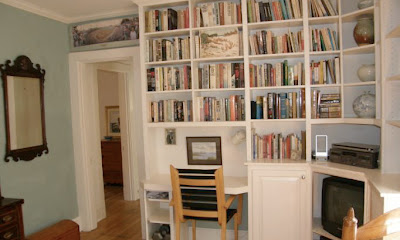
Its marble headquarters at 2101 Constitution Avenue NW was built in 1924 by celebrated architect Bertram Grosvenor Goodhue, who died four days prior to its dedication. Though it continues to serve as an epicenter of the elite in times of war and peace, the National Academy of Sciences building’s programmatic mission had changed dramatically in recent years, according to Quinn Evans Architects Principal Larry Barr.
Undergoing three more building campaigns and sequential additions of a west wing in 1962, an east wing in 1965 and a 700-seat auditorium in 1970, the 182,000 s.f. space had been compromised in recent years by an insufficient infrastructure that resulted in burgeoning maintenance fees. Tantamount to that, the organization’s modus operandi had changed to include substantial public engagement at hearings and presentations, its conference rooms and public spaces markedly unequal to the task.
“As recently as 10, 15, 20 years ago, an awful lot of NAS’ work was behind closed doors,” Barr said. “It was time to bring the facility into the 21st Century,” a project begun in 2007 and slated for completion in April, 2012.
Citing elements and more that were part of a 2006 master plan, including relocating and/or expanding conference rooms, reinterpreting public access, evolved wayfinding and circulation,  and improved ADA-compliancy (some of the Academy's nearly 2,200 esteemed members and 400 foreign associates, if visiting, had to enter indirectly on C Street through the back), Barr said encroaching on the building’s historic fabric was certainly at issue. “It was turning the first floor into a public floor that was the driver,” he added, noting additional space needed to be captured without expanding beyond perimeter walls.
and improved ADA-compliancy (some of the Academy's nearly 2,200 esteemed members and 400 foreign associates, if visiting, had to enter indirectly on C Street through the back), Barr said encroaching on the building’s historic fabric was certainly at issue. “It was turning the first floor into a public floor that was the driver,” he added, noting additional space needed to be captured without expanding beyond perimeter walls.
To that end, utilizing east and west courtyards that accrued to related wings, the architects infilled each space with a roof and skylights so they became suitable, informal public gathering spaces for hearing breaks or cocktail parties. Three new conference rooms have been established on the main floor, two accommodating up to 150 people each, with a smaller space seating 50.  The renovation also reintroduces two historic gallery spaces to showcase art.
The renovation also reintroduces two historic gallery spaces to showcase art.
According to Quinn Evans Project Manager Tom Jester, a considerable number of half-levels needed to be addressed to make the building handicap-accessible. Accordingly, elevators and ramps are being installed, with front-of-the-building access achieved by the removal of an existing window, and wall beneath the window, down to the ground. A bronze door will be added to match other historic bronze doors throughout the structure, facilitating access to an entry vestibule and elevator that goes to the main floor lobby.
Preserve and protect
With the 1924 portion of the building most historically significant, including the Great Hall which contains the behemoth rotunda, integrating elements like fire protection, updated electrical systems and data systems into historic spaces where there isn’t a great deal of cavity space, or access behind walls, was a significant design challenge. Identifying “creativity” as a key component in a successful restoration/renovation of this nature, Jester said specific variances had to be obtained to preserve the work of original architect Goodhue and his team, which included bronze sculptor Lee Lawrie—who created the building’s bronze spandrel panels, 
Akoustolith, a widely used porous ceramic material employed in the early 20th Century to moderate noise, was used in the building's Great Hall and contains decorative painting and gilding. With the team in the process of conserving and restoring those surfaces, Jester said they will be brought much closer to their original appearance. Untouched since original construction, the material had fallen victim to cigarette smoke and other environmental abrasives—emblematic of its age.
Under the sun
In regard to NAS’ exterior, Barr said the building was generally in good condition, with repointing underway and a major concern expressed by the team that over time mortar had been replaced with an inappropriate 
Restoring the building’s original steel windows while preserving the 1924 building’s historic character was also important— the decision made to retain them but apply a low-emission glaze. 
Historic lighting fixtures are being retrofitted to incorporate LED’s, where possible, on the path to LEED Silver certification—a requirement for the $45 million NAS project as it is financed with city bonds. The restoration/renovation is the District’s first project to be reviewed under the lens of the D.C. Green Building Act.
Citing the efficiency and cooperative spirit of an extensive team with an aggressive schedule, which includes The Gilbane Building Company and The Christman Company, Barr has summarized the NAS project as “a very challenging intellectual exercise” in its complexity, allowing for 21st Century activity without compromising historic integrity. “In the end it’s going to be a great building for the client,” he said.







































